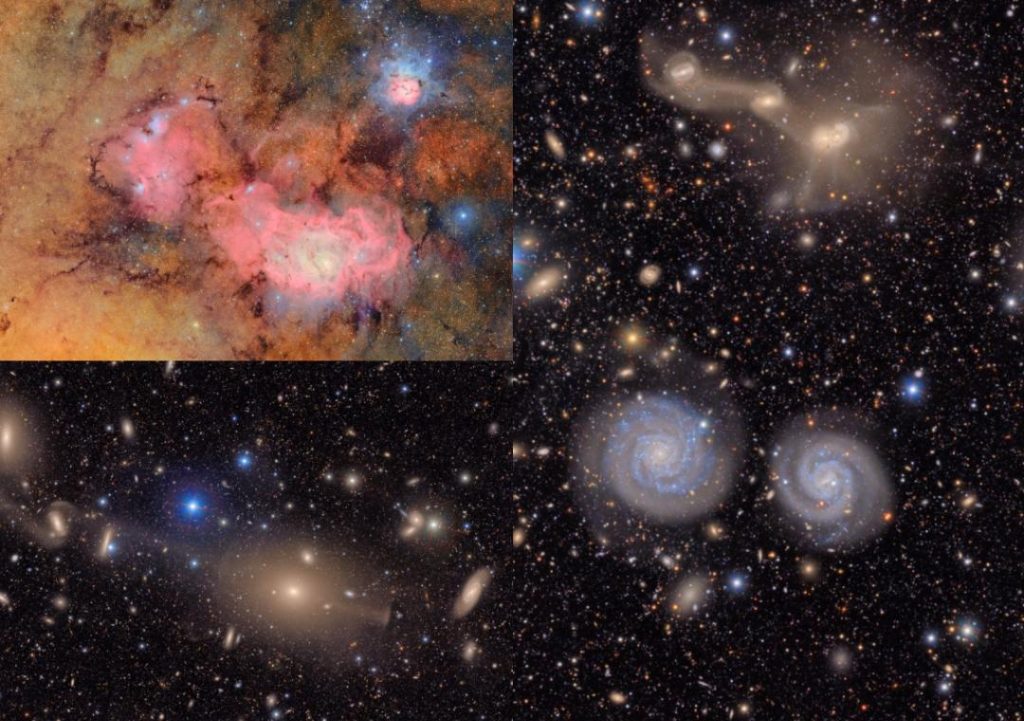
1st Pictures Captured by World’s Most Powerful Space Camera Released
The wait is finally over! The first pictures captured by the Legacy Survey of Space and Time (LSST) camera at the NSF-DOE Vera C Rubin Observatory have been released, and they are nothing short of breathtaking. The camera is the largest and most powerful ever made, and these initial images are a testament to its capabilities. In one of the pictures, massive, colourful gas and dust clouds swirl in a star-forming region located a staggering 9,000 light years from Earth.
The LSST camera is a marvel of modern technology, featuring a 3.2-gigapixel sensor and a 3.2-meter primary mirror. It is designed to take advantage of the unique properties of the Vera C Rubin Observatory’s site in Chile, where the atmospheric conditions are ideal for astronomical observations. The camera is capable of capturing images with unprecedented resolution and sensitivity, allowing scientists to study the universe in ways previously impossible.
The first images released by the LSST camera are a mix of test shots and real science data. The test shots demonstrate the camera’s ability to capture a wide range of wavelengths, from visible light to near-infrared. The real science data, on the other hand, shows off the camera’s ability to detect and study distant objects in the universe.
One of the most striking images released by the LSST camera is a picture of a star-forming region located 9,000 light years from Earth. The region is home to massive, colourful gas and dust clouds that are swirling together to form new stars. The image is a vibrant representation of the raw power of the universe, and it is a testament to the LSST camera’s ability to capture the beauty and complexity of the cosmos.
Another image released by the LSST camera shows a field of stars and galaxies in the distant universe. The image is a stunning example of the camera’s ability to detect and study distant objects, and it is a testament to its potential to make new and important discoveries.
The LSST camera is just one part of the larger Legacy Survey of Space and Time (LSST) project. The project is a decade-long effort to map the entire sky, studying the universe from the earliest moments of the Big Bang to the present day. The LSST camera will be used to take thousands of images of the sky every night, and it will be capable of detecting objects as small as a car on the Moon.
The LSST project has the potential to make significant contributions to our understanding of the universe. By mapping the entire sky, scientists will be able to study the distribution and evolution of galaxies, stars, and other celestial objects. The project will also be able to study the properties of dark matter and dark energy, which are thought to make up a large portion of the universe.
The release of the first pictures taken by the LSST camera is an exciting milestone in the project’s history. It marks the beginning of a new era in astronomical research, and it is a testament to the power and potential of the LSST camera.
In conclusion, the first pictures captured by the LSST camera are a testament to its incredible capabilities and potential. The camera is the largest and most powerful ever made, and it is poised to make significant contributions to our understanding of the universe. The release of these initial images is an exciting milestone in the project’s history, and it is a reminder of the incredible things that can be achieved when scientists and engineers work together to push the boundaries of human knowledge.
News Source:
https://x.com/VRubinObs/status/1936998162704609469






